We love all that flies.
-Those Fantastic Flying Machines-
NEWS AND ANNOUNCEMENTS
Search This Blog
Some links may have expired
Ghetto List
Saturday, May 21, 2016
Thursday, May 19, 2016
Wednesday, May 18, 2016
Monday, May 16, 2016
Sunday, May 15, 2016
Tuesday, May 10, 2016
Friday, April 29, 2016
Sunday, April 24, 2016
Inside the abandoned underground Communist airbase nestling on the Croatian-Bosnian border
Rusting planes surrounded by a minefield and radioactive dust: Inside the abandoned underground Communist airbase nestling on the Croatian-Bosnian border
Read more: http://www.dailymail.co.uk/news/article-3081040/Rusting-planes-surrounded-minefield-radioactive-dust-Inside-abandoned-underground-Communist-airbase-nestling-Croatian-Bosnian-border.html#ixzz46kwBM51X Follow us: @MailOnline on Twitter | DailyMail on Facebook
Read more: http://www.dailymail.co.uk/news/article-3081040/Rusting-planes-surrounded-minefield-radioactive-dust-Inside-abandoned-underground-Communist-airbase-nestling-Croatian-Bosnian-border.html#ixzz46kwBM51X Follow us: @MailOnline on Twitter | DailyMail on Facebook
Wednesday, April 13, 2016
Sunday, April 10, 2016
Thursday, April 07, 2016
Monday, April 04, 2016
Sunday, April 03, 2016
Wednesday, March 23, 2016
Monday, March 21, 2016
Sunday, March 20, 2016
Saturday, March 19, 2016
Friday, March 18, 2016
Wednesday, March 16, 2016
Thursday, March 10, 2016
The Canberra - Why Nasa still flies an old British bomber design

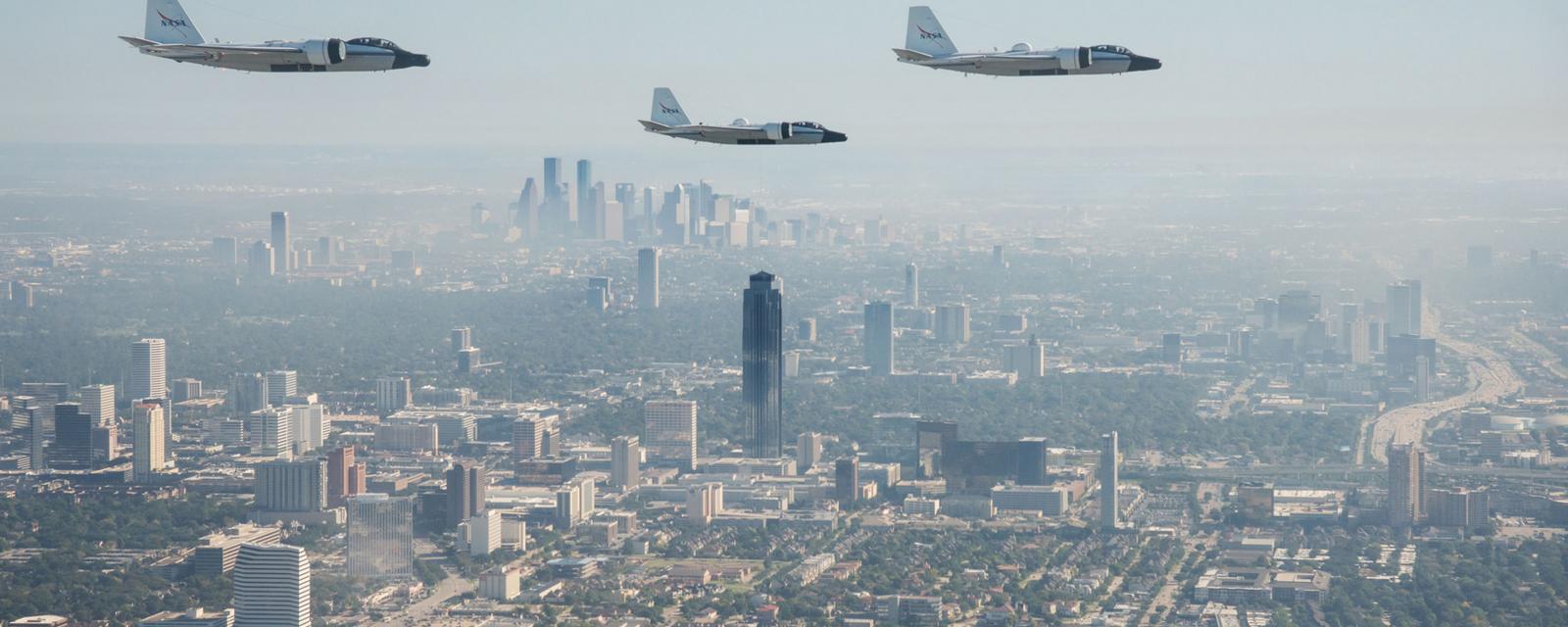
Why Nasa still flies an old British bomber design
The Canberra bomber was designed way back in the 1940s. So why is Nasa still using three of them today? BBC Future investigates.
By Stephen Dowling10 March 2016
In 1944, with World War Two entering its final stages, the British Air Ministry set out requirements for a new bomber, one that would be able to fly at high speeds and high altitudes.
The ministry planners couldn’t have guessed that the aircraft that would eventually win the tender, the English Electric Canberra, would still be soldiering on more than 70 years later – flying science labs conducting research for Nasa and other US government agencies.
So why isthe US space agency – which has operated some of the most cutting-edge aircraft in aviation history – still using an aircraft that whose design comes from the dying days of World War Two?

Canberras were designed as bomber aircraft, but the design proved useful for other roles (Credit: Getty Images)
The Canberras used by Nasa are an American version, designated WB-57, and based on the B-57 model built under licence by aircraft-maker Martin in the 1950s; they constructed some 400 between 1953 and 1957. Nasa’s examples are the very last still on active service – some 33 years after the US Air Force retired theirs. Recently, the three remaining Canberras were pictured flying in formation over Houston, where they are based.
Nasa’s Canberras are a part of the agency’s Airborne Science Program (ASP), explains Charles Mallini, who is the program manager for Nasa’s Canberra fleet. “The ASP is responsible for providing aircraft systems that further science and advance the use of satellite data,” he says.
Their ability to fly high makes them suitable for a variety of jobs, says Mallini, many of them in support of Nasa satellites. These include calibration tests to help fine-tune measurements from satellites, test new sensors before they are launched into space, and obtain high-altitude measurements which can then be crosschecked with readings taken from satellites in orbit. The Canberras have flown a range of science instruments, measuring atmospheric chemistry, cloud particles, cosmic dust, soil moisture, sea ice elevation and more, says Mallini.
The Canberra proved to be a good design right from the very start – David Keen, RAF Museum
That Canberras are still flying is a tribute to the aircraft’s design, which is all the more impressive given that the Canberra is from the very first generation of jet aircraft – a time when aircraft designers were struggling to deal with the enormous issues that came from travelling at such high speeds. And it’s even more exceptional because the Canberras are doing a job that was undreamed of when the aircraft first entered service.

The RAF also used some Canberras for high-altitude meteorological work (Credit: Science Photo Library)
The English Electric Canberra began life with the Air Ministry’s 1944 call for a new, fast bomber, and first flew in 1950. It was a sleek and graceful design, looking very much like the fighter aircraft of the time; the pilot and navigator sat next to each other in a fighter-style cockpit, while a bomb aimer peered through the Perspex nose of the aircraft. The Rolls-Royce Avon engines, a design that would later power Britain’s supersonic Lightning fighter, were housed in aerodynamic nacelles, one on each of its thick wings. The plane’s wingspan was almost exactly as long as the aircraft’s fuselage, an oddly neat detail in an aircraft built to be fast, reliable and easy to fly. In 1957, a Canberra broke the record for highest altitude, when it reached a height of 70,310ft (21,400m).
Fast and high
“The Canberra proved to be a good design right from the very start,” says David Keen from the RAF Museum, Hendon.
“It could go quite fast for a bomber, and go higher than any other bombers could go,” he says. The Canberra didn’t carry any defensive guns like World War Two-era bombers had – it was supposed to fly so fast that enemy fighters simply wouldn’t be able to catch up.
“These characteristics are responsible for its long career in service,” says Keen. “And they also help to make it a very good reconnaissance plane.” Bombers tend to be built so they’re easy to fly and easy to keep stable – which helps when you’re trying to accurately bomb a target – and that also tends to make aircraft a good choice for reconnaissance missions.
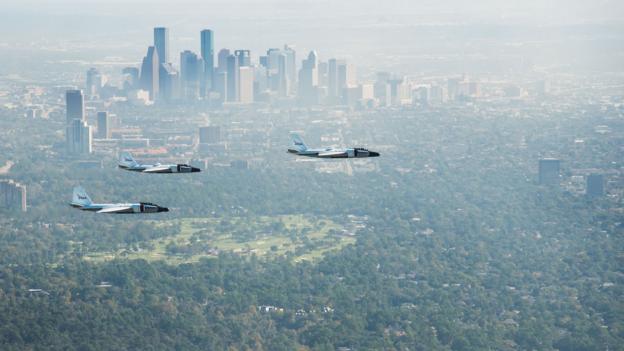
The three Canberras are only kept in the air thanks to technicians stripping spare parts off retired aircraft (Credit: Nasa/Flickr)
Early on, a Canberra could carry several high-performance cameras which could allow it to film high above enemy air defences; it also contained sensors that could listen in on electronic communications. As its combat career waned, this is the role that essentially kept the Canberra flying long past its projected life – and made it suitable for the kind of work it now carries out for Nasa.
The RAF phased out its bomber version of the Canberra in 1972, but the aircraft was to soldier on as a reconnaissance plane for another three decades. The Canberras flew high-altitude observation missions in Northern Ireland, Bosnia and Kosovo, and also were also used in Afghanistan the early 2000s, some 50 years after the first Canberras entered service.
The Canberra’s design could withstand many modifications
Former RAF wing commander David Bruce, a member of the Royal Aeronautical Society, flew in Canberras in the late 1960s, based mostly on the Mediterranean island of Malta and flying in the photo reconnaissance version. “As a navigator I loved to be able to look out and see ahead and under the aircraft whilst all the time still having the benefit of being strapped into an ejection seat,” he says.
“I think a great deal of my enjoyment of flying the Canberra was associated with the recce role – and particularly during photographic survey work for map-making purposes. During my time on the squadron we carried out surveys of the Gambia, Sierra Leone, Kenya, the Maldives and parts of UAE.
“When things were going well it handled beautifully – it had good visibility, and flying at low level demanded a lot of the pilot. Its … handling had to be very closely watched and demanded a lot of concentration and so that might add to a sense of achievement.”
Bruce flew many reconnaissance training missions at very high altitude over the Middle East, where “the contrast between the topography – the Gulf coastline, the odd huge lake, mountains of all shapes and sizes and differing colours and the sheer isolation of many villages – all were exposed in great relief.”
Soldiering on
Nasa’s Canberras are carrying out similar work to the kind Bruce did, though the aircraft themselves look somewhat different, a testament that the Canberra’s design could withstand many modifications. The wings of the blue-and-white painted Nasa examples are almost twice as long as those on the original aircraft, which help keep the aircraft aloft in the thin air at high altitudes.
The Canberras are so good at their job that there is no plan to retire them
“What makes this aircraft stand the test of time is its unique capabilities of aircraft ceiling, range, max payload and aircrew,” says Mallini. The ER-2s (based on the U-2 spyplane) that Nasa also uses may be able to fly higher, but they can’t carry as much equipment as the Canberra. Nasa’s Global Hawks, meanwhile, can fly for four times longer but can only a quarter of the payload.
The Canberras are so good at their job that there is no plan to retire them. “In fact, we are always looking at ways to increase their capabilities from the standpoint of endurance, communications systems, and data acquisition. All three aircraft have recently completed a set of upgrades which include a new autopilot system, updated ejection seat system, new data acquisition system, satellite communications, and upgraded communications system,” says Mallini. In fact, as recently as 2013 there were only two Nasa Canberras – until Mallini’s unit brought one back from retirement. The plane, known as 63-13295, had been retired since 1972; it spent some 20 years in the famous Arizona Boneyard on the outskirts of Tucson before Nasa decided there was enough work to warrant a third aircraft. When the plane – now known as Nasa 927 – carried out its first test flight in August 2013, it was the first time it had flown in 41 years.

Nasa has no plans to retire its three WB-57s (Credit: Nasa/Flickr)
Keeping this fleet of old aircraft in the air, however, is not easy. “Parts acquisition is one of our biggest challenges since many of the parts on the aircraft are no longer available and the vendor has long since shut down,” says Mallini.
“We have scavenged parts from the aircraft that have been stored at Davis-Monthan Air Force Base outside of Tucson, Arizona and even from museum aircraft from around the country. When parts are no longer available our engineering team has to design or procure a functionally similar replacement part or back engineer the part. This can easily present a number of design challenges for the team.”The fuel tanks caps, for example, had been taken on and off so many times that they no longer fitted tightly “allowing the caps to come loose in flight”, says Mallini. The problem is, the company that had made them had long-since closed down. The support crew had to reverse engineer a replacement, make an engineering prototype and then make 100 new examples.
In RAF service, the Canberra’s work is now largely done by Tornado bombers and unmanned aircraft. Their retirement brought to an end one of the golden eras of aviation, one that can seem unimaginably low-tech by modern standards.
“The Canberra had a wooden tail,” Keen says. “So that meant that the RAF had to have carpenters right up until the aircraft came out of service.” From such humble beginnings, a Nasa legend has been made.
Join 500,000+ Future fans by liking us on Facebook, or follow us on Twitter, Google+, LinkedIn and Instagram. This story is a part of BBC Britain – a series focused on exploring this extraordinary island, one story at a time. Readers outside of the UK can see every BBC Britain story by heading to the Britain homepage; you also can see our latest stories by following us on Facebook and Twitter.
If you liked this story, sign up for the weekly bbc.com features newsletter, called “If You Only Read 6 Things This Week”. A handpicked selection of stories from BBC Future, Earth, Culture, Capital, Travel and Autos, delivered to your inbox every Friday.
Related Stories
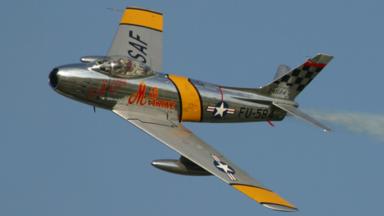
The greatest test pilot in history?
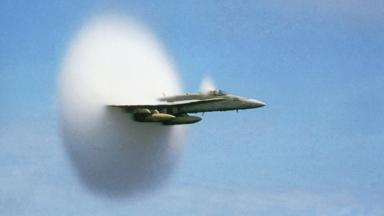
Are these weird clouds ‘sonic booms’?
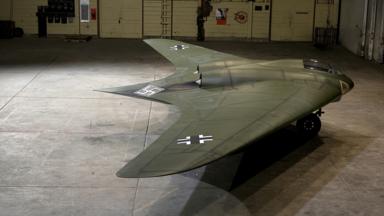
The Nazis’ futuristic 'flying wing'
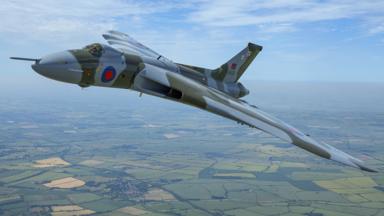
How a Cold War bomber flew again
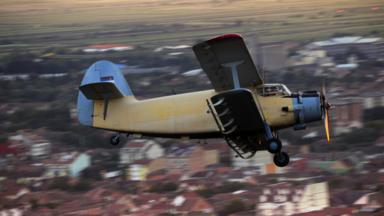
The plane that can fly backwards
Follow BBC Future
Copyright © 2016 BBC. The BBC is not responsible for the content of external sites. Read about our approach to external linking.
Wednesday, February 24, 2016
Monday, February 22, 2016
Drone users face jail time, fines if they don't register
Drone users face jail time, fines if they don't register
522
51

Getty Images
By Keith Laing - 02/22/16 02:48 PM EST
Drone users are facing the possibility of fines up to $27,500 and even jail time if they have not registered their devices with the federal government.
The Federal Aviation Administration's Feb. 19 deadline for drone registrations, which was set in December, has now passed.
The agency says "failure to register an aircraft may result in regulatory and criminal sanctions."
"The FAA may assess civil penalties up to $27,500," the FAA said in a frequently asked questions post on its website. "Criminal penalties include fines of up to $250,000 and/or imprisonment for up to three years."
The FAA is imposing a $5 fee for registrations, over the objections of drone advocates, but the agency provided refunds people who registered their drones within the first 30 days of the new requirement.
The agency said Monday that 368,472 drones were registered by midnight on Feb. 19, surpassing the number of airplanes that are on record with the federal government.
FAA Administrator Michael Huerta says he is encouraged by the response to the drone registration rules, which were implemented by the Transportation Department in December after an increase in the number of reported drone sightings by commercial airline pilots.
"The speed with which we were able to roll this out is a testament to the invaluable input we received from the diverse task force of stakeholders we brought together to work on this issue," he said in a recent speech at a drone policy summit in Washington.
"It’s proof that when government and industry partner, we can innovate, cut through red tape, and use technology to tackle emerging risks."
Drone users have complained about the fees, labeling them a "drone tax." A drone hobbyist in Silver Spring, Md. and a technology group have sued the FAA over the rules, arguing the mandate violates a federal law prohibiting the FAA from regulating recreational drones.
The FAA has defended the legality of the system, saying the agency has the authority to regulate all "aircrafts" that are flown in the U.S. The agency has also defended the drone registration fee is nominal.
The Hill 1625 K Street, NW Suite 900 Washington DC 20006 | 202-628-8500 tel | 202-628-8503 fax
The contents of this site are ©2016 Capitol Hill Publishing Corp., a subsidiary of News Communications, Inc.
Saturday, February 06, 2016
Wednesday, February 03, 2016
If You Registered Your Drone with the FAA, Kiss Your Privacy Goodbye
HIT & RUN BLOG
[UPDATED] If You Registered Your Drone with the FAA, Kiss Your Privacy Goodbye
Whoops! The mandatory unmanned aerial vehicle database is public and searchable.
Katherine Mangu-Ward|Feb. 3, 2016 2:28 pm
 docpop / photo on flickr
docpop / photo on flickr[UPDATE: CEI policy analyst and drone nerd Marc Scribner writes to note that while there are some personal drones listed in the public database, that list is of people who registered their drones under a 2012 rule governing commercial drones. Registrants under the December rules are not in there. At least not yet...]
Are you a law-abiding drone owner who registered your unmanned aerial vehicle with the federal government? Congratulations! Total strangers can now find your name, address, and lots of stuff about your fun toy in a public, searchable database!
Late last year, the Federal Aviation Administration (FAA) announced that virtually everyone who owns a drone (a drone's a drone, no matter how small, it seems) would have to register their flying computers for $5 a pop with the federal government. The penalty for failing to register: civil fines of up to $27,500 and criminal penalties of up to $250,000 and imprisonment for three years.
Reason's Scott Shackford has written about the failure of the FAA to actually convince most people to register theirdrones.
And thank goodness for that incompetence, since it will offset this latest revelation of incompetence: The 300,000 entries in the federal UAV registry are public, searchable, and downloadable, despite claims by the feds to the contrary, Engadget reports.
Go ahead, search vehicle registrations in your neighborhood right here on this handy official webpage!
This registry includes private planes as well, but scan for "UAVs under 55 lbs" to see drones that have been registered under the new law.
What's more, as the think tank Heritage notes in a report released yesterday, the FAA registry fails to accomplish its stated goals of improving safety, providing accountability, and offering education to drone owners.
"It is clear that this regulatory response was rushed and arbitrary," conclude authors Jason Snead and John-Michael Seibler, "but there is also a pernicious side effect to this purposeless regulation: Otherwise innocent people are now exposed to criminal liability for no valid purpose."
Add to that list that innocent people have now had their privacy undermined as well.
Katherine Mangu-Ward is managing editor of Reason.
Follow Katherine Mangu-Ward on Twitter
VIEW COMMENTS (29) | LEAVE A COMMENT
You must have an account and be logged in to comment.
Click here to register, or here to login if you already have an account
©2015 Reason Foundation.|reason.org |privacy policy|terms of use|technical feedback
Monday, February 01, 2016
Sunday, January 31, 2016
Saturday, January 30, 2016
Boeing B-52F Stratofortress - "Fuel Starvation & Bail-Out" - 3/14/61
Boeing B-52F Stratofortress - "Fuel Starvation & Bail-Out" - 3/14/61
Tuesday, January 26, 2016
Saturday, January 23, 2016
Friday, January 22, 2016
Wednesday, January 20, 2016
Tuesday, January 19, 2016
Monday, January 18, 2016
Airbus A380 landing in a heavy crosswind at Düsseldorf airport in Germany
This incredible video shows a massive Airbus A380 landing in a heavy crosswind at Düsseldorf airport in Germany
Posted by NBC Nightly News with Lester Holt on Tuesday, September 29, 2015
Monday, January 04, 2016
RUSSIAN COLD WAR AVIATION VIDEO
Mighty Su-15 InterceptorIconic Soviet Interceptors Su-15 Flagons, Tu-128 and Su-11
Posted by Cold War Soviet Aircraft on Sunday, January 3, 2016
Saturday, January 02, 2016
Subscribe to:
Posts (Atom)



